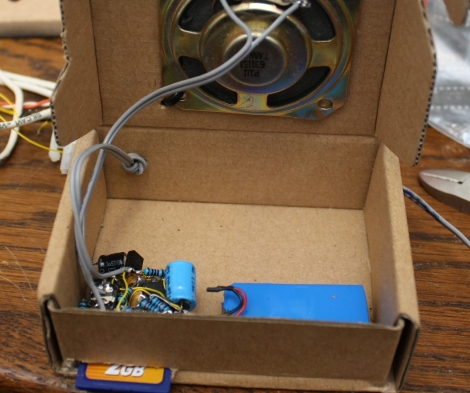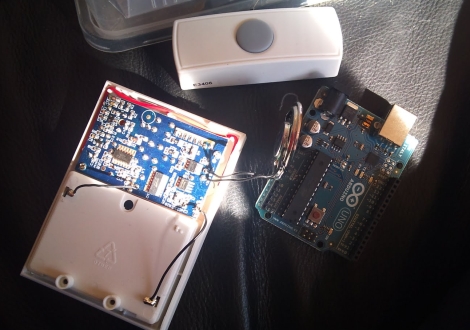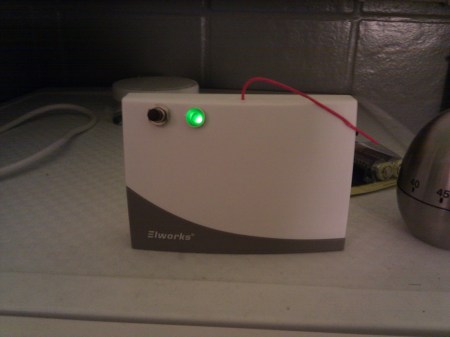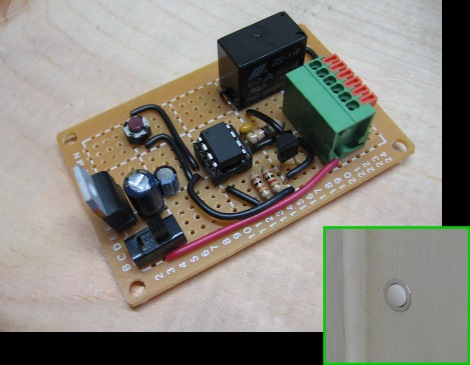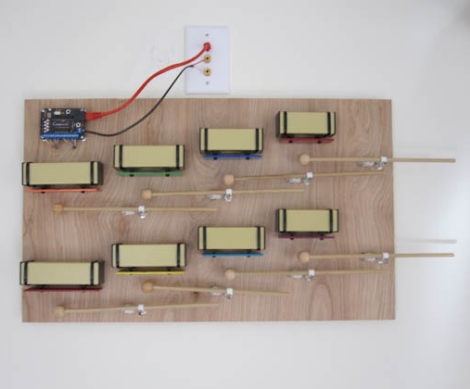
When [David] moved into his new house, one of the things he noticed was that his doorbell was pretty lame. Coming from a home equipped with a solenoid and chime bell, his new wireless solid state doorbell sounded terrible to him.
Crummy sound aside, the doorbell hardly ever worked properly, but alas, other projects cropped up and years went by before [David] addressed his doorbell problem. Like many things that take a long time to come to fruition, we think his resonator bell based solution was well worth the wait.
One of his main goals was to make a nice sounding doorbell that also looked great. He mounted a kid’s resonator bell toy on a sheet of wood, creating his own wooden mallets for the job. He initially had a tough time locating actuators for his doorbell, but found a solution in geared pager motors as featured in another xylophone hack on Make. With the hardware taken care of he focused on the electronics, which consist of a pair of Arduino clones – one on the display and one in his basement.
Stick around to see [David’s] Campanello doorbell in action, and be sure to check out his site for more details if this sounds like something you would like to have in your home.
[via Make]
Continue reading “A Doorbell Pleasing To Both The Ears And Eyes”


